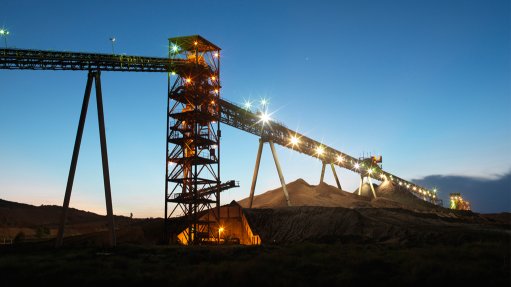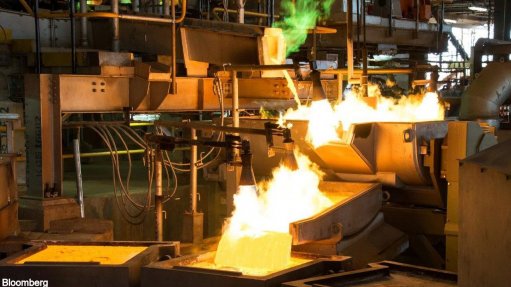Platinum strike threatens contractor longevity


PROTRACTED STRIKE, CONTRACTOR PLIGHT Mining companies are more likely to drop the axe on contractors than their permanent labour force
Photo by Bloomberg
Mining contractors could be forced to close shop as a result of force majeure being declared at the strike-affected operations of platinum majors Anglo American Platinum, Impala Platinum and Lonmin.
“Many of the general mining contractors survive on a month-to-month basis and the effects of industrial action, such as the ongoing platinum-sector strike, leaves them without any income,” says professional services firm Deloitte strategy and consulting lead Jan-Adriaan du Plessis.
He maintains that the longevity of contractors will be determined by how vital their services are to certain mining houses, which may bail out those contractors whom they consider to be critical to a mining operation’s success.
Deloitte Consulting operational excellence executive lead Rhyno Jacobs, notes that the financial impact of the platinum strike, which started in late January could result in under- performing contractors being at risk.
“Owing to the significant loss of production and subsequent income loss, mining companies will have to tighten their belts. Further, they are more likely to drop the axe on contractors than their permanent labour force,” says Jacobs.
“The impact of the platinum-sector strike will be significant. At certain mines, con- tracted employees constitute between 30% and 40% of a mine’s total labour complement,” Du Plessis notes, highlighting that protracted strikes will have far-reaching socioeconomic consequences.
He suggests that, to remain profitable, mining contractors need to differentiate themselves from competitors offering similar services. Differentiation is easier for contractors offering niche services, such as raise- boring, mechanised development and large-scale civil work, which target knowledge gaps in a mining company.
However, contractors supplying general commodity-type services can only compete on price, which inevitably impacts on the earning potential of lower-level contractor employees, notes Du Plessis, adding that the remuneration structure for contractor employees generally differs from that of the permanent labour force.
He explains that contract miners have a relatively small fixed salary and a variable but large, performance-linked remuneration. “The recent drop in production efficiency has resulted in contracted workers not receiving the remuneration they had been accustomed to. These issues result in an unhappy labour force and contract companies that are not profitable,” says Jacobs.
He believes that general mining contractors are “in for a tough time” and that the current contractor/permanent employee model that has evolved over the last decade is not sustainable under the current operating conditions. It is unlikely that the status quo will change without a dedicated effort by the mining companies.
Du Plessis further argues that, as a result of the current contract remuneration structure, the only way for contractors to remain profitable is to become more specialised and efficient than the permanent labour force. “Contract mineworkers can still differentiate themselves in terms of efficiency but, based on what we’ve seen in the last 18 months, it is just not happening.”
Jacobs concurs, adding that the contract remuneration model should be similar to that of large mining houses. “From a fringe benefit and debt-to-income point of view, the rules that mining companies abide by must apply to contractors as well.”
He highlights that, if the same rules aren’t implemented for mining companies and contractors, it will aggravate the socioeconomic imbalance in a mining community, as contract miners and permanent miners live in the same areas.
Meanwhile, Jacobs notes that one of the most significant challenges currently facing mining contractors is the retention of skills, as mineworkers are motivated by wages and it is common for them to shift between contractors and mining companies.
Du Plessis highlights union pressure – for mining companies to employ their members – as another current challenge. “Most of the employees at contract mining companies are not members of unions and because they do not earn as much as permanent mineworkers, there is pressure from unions on mining companies to employ contractor employees permanently.”
He further notes that, while mining companies are required to employ a significant contingent from the communities surrounding a mining operation, contract companies often have a high migrant labour contingent.
“Contractors do not have as much pressure as mining companies in terms of employee demographics. However, this is changing, as mining companies are placing more pressure on contractors to employ local labour by enforcing procurement policies,” concludes Du Plessis.
Comments
Press Office
Announcements
What's On
Subscribe to improve your user experience...
Option 1 (equivalent of R125 a month):
Receive a weekly copy of Creamer Media's Engineering News & Mining Weekly magazine
(print copy for those in South Africa and e-magazine for those outside of South Africa)
Receive daily email newsletters
Access to full search results
Access archive of magazine back copies
Access to Projects in Progress
Access to ONE Research Report of your choice in PDF format
Option 2 (equivalent of R375 a month):
All benefits from Option 1
PLUS
Access to Creamer Media's Research Channel Africa for ALL Research Reports, in PDF format, on various industrial and mining sectors
including Electricity; Water; Energy Transition; Hydrogen; Roads, Rail and Ports; Coal; Gold; Platinum; Battery Metals; etc.
Already a subscriber?
Forgotten your password?
Receive weekly copy of Creamer Media's Engineering News & Mining Weekly magazine (print copy for those in South Africa and e-magazine for those outside of South Africa)
➕
Recieve daily email newsletters
➕
Access to full search results
➕
Access archive of magazine back copies
➕
Access to Projects in Progress
➕
Access to ONE Research Report of your choice in PDF format
RESEARCH CHANNEL AFRICA
R4500 (equivalent of R375 a month)
SUBSCRIBEAll benefits from Option 1
➕
Access to Creamer Media's Research Channel Africa for ALL Research Reports on various industrial and mining sectors, in PDF format, including on:
Electricity
➕
Water
➕
Energy Transition
➕
Hydrogen
➕
Roads, Rail and Ports
➕
Coal
➕
Gold
➕
Platinum
➕
Battery Metals
➕
etc.
Receive all benefits from Option 1 or Option 2 delivered to numerous people at your company
➕
Multiple User names and Passwords for simultaneous log-ins
➕
Intranet integration access to all in your organisation



















